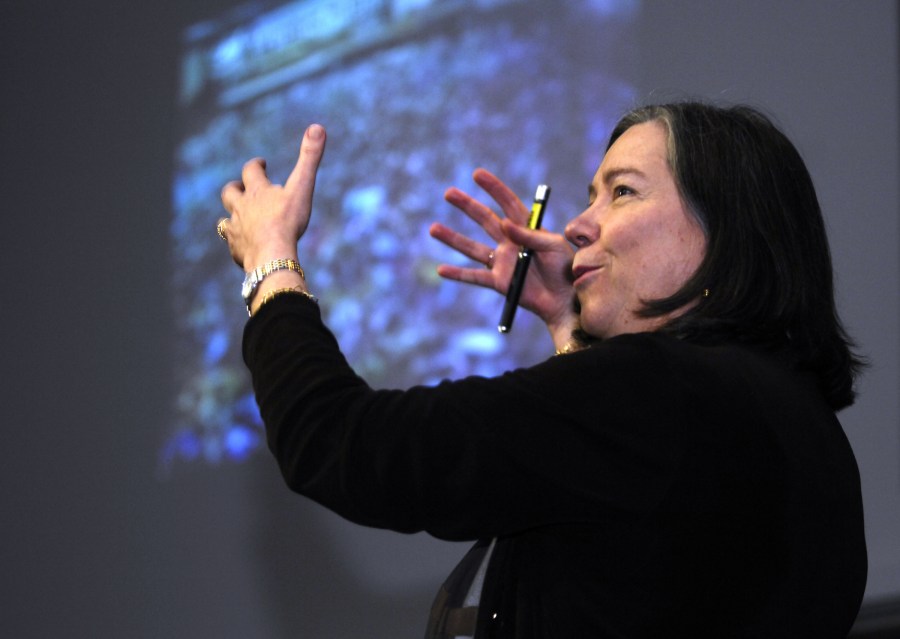
Susan Lindquist, Ph.D., makes a point at last week’s Discovery Lecture. (photo by Anne Rayner)
Protein folding explored in Lamson Discovery Lecture
A protein trying to fold into its 3-D shape inside a cell may experience something like a person does at the Tokyo Summerland Wave Pool on a hot day, said Susan Lindquist, Ph.D., during her Discovery Lecture last week. The audience chuckled at a YouTube video clip showing wall-to-wall bodies and floats — no water was visible — bobbing in the pool.
“The problem of protein folding in a nutshell is that proteins have to reach these incredibly complicated shapes in an absolutely ridiculous environment,” said Lindquist, a member of the Whitehead Institute for Biomedical Research and professor of Biology at MIT.
“Proteins have to fold in an incredibly crowded environment in the living cell…and not only is it really crowded, it's kinetic chaos in there because these proteins are bumping around and tumbling and banging into each other all the time.”
Tip the balance just a little, she said, by stressing the cell with heat, low oxygen, or toxins, for example, and there's “protein folding chaos.”
Lindquist and her colleagues have explored the roles of “heat shock proteins” — the proteins that cells “turn on” when they are stressed by heat or other insults.
Heat shock proteins act as molecular chaperones — they help other proteins fold by interacting with them and accompanying them through the folding process.
Lindquist described studies exploring the roles of heat shock proteins in the evolution of fungi (to acquire new traits like resistance to anti-fungal drugs), in enabling tumor survival, and in protecting neuronal cells against degeneration.
“This response is so multi-faceted, just shifting the balance a little bit in terms of vulnerability to cancer and neurodegeneration may be all we need to do,” Lindquist said.
To that end, her team has screened 350,000 chemicals to find compounds that will induce, potentiate, or inhibit a heat shock response. Though it's still early days, she said, Lindquist described promising results of one compound — a natural product that has been used as a wellness tonic in India for 3,000 years — in treating mice with aggressive brain tumors.
“I'm hopeful that we might actually wind up coming up with some new therapeutic strategies in this balance between protein folding and disease,” she said.
Lindquist's lecture was the 25th Paul D. Lamson Memorial Lecture, a bi-annual special event honoring Lamson, the first chair of Vanderbilt's Department of Pharmacology.













